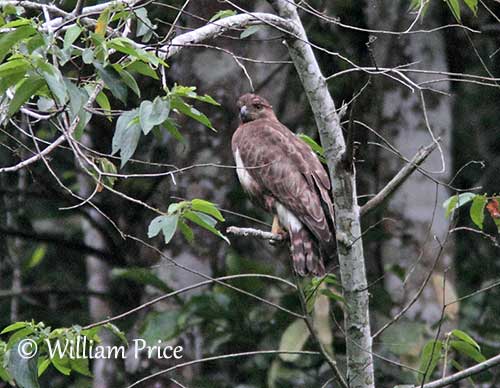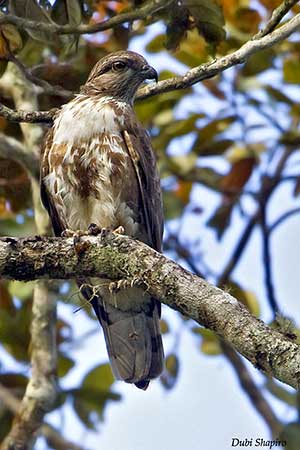
Fr: Baza malgache
Ang: Madagascan Cuckoo-Hawk
All: Lemurenweih
Esp: Baza Malgache
Ita: Baza del Madagascar
Nd: Madagaskarkoekoekswouw
Sd: madagaskarbaza
Mal: Bobaka, hitsikitsikala
Photographers:
William Price
PBase-tereksandpiper & Flickr William Price
Dubi Shapiro
Dubi Shapiro Photo Galleries & Dubi Shapiro's Pictures on IBC
Text by Nicole Bouglouan
Sources:
HANDBOOK OF THE BIRDS OF THE WORLD Vol 2 by Josep del Hoyo-Andrew Elliot-Jordi Sargatal - Lynx Edicions - ISBN: 8487334156
BIRDS OF PREY OF AFRICA AND ITS ISLANDS by Alan and Meg Kemp - Struik Publishers - ISBN: 1770073698
RAPTORS OF THE WORLD by James Ferguson-Lees et David Christie - Helm Identification Guides – ISBN: 0713680261
Birds of Madagascar: A Photographic Guide Par Pete Morris, Frank Hawkins – ISBN: 0300077556, 9780300077551- Editeur: Yale University Press, 1998
Birds of Madagascar and the Indian Ocean Islands Par Roger Safford, Adrian Skerrett, Frank Hawkins – ISBN: 1472924118, 9781472924117- Editeur: Bloomsbury Publishing, 2015
The Birds of Africa: Volume VIII: The Malagasy Region: Madagascar, Seychelles, Comoros, Mascarenes - Par Roger Safford, Frank Hawkins – ISBN: 1408190494, 9781408190494- Editeur: A&C Black, 2013
Global Raptor Information Network - Working to Conserve Birds of Prey in nature
Animal Diversity Web (University of Michigan Museum of Zoology)
Wikipedia, the free encyclopaedia
Madagascan Cuckoo-Hawk
Aviceda madagascariensis
Accipitriformes Order – Accipitridae Family
INTRODUCTION:
The Madagascan Cuckoo-Hawk is endemic to Madagascar where it occurs in both evergreen and dry deciduous forests but also in degraded habitats. It feeds on amphibians, large insects and lizards, spending much time perched while looking for prey. It is usually solitary outside breeding season, but the pair is monogamous and builds a nest in the canopy. Some aerial displays are observed.
The Madagascan Cuckoo-Hawk is not globally threatened but it is vulnerable to habitat destruction involving some decline of the population.
DESCRIPTION OF THE BIRD:
Biometrics:
Length: 40-45 cm
Wingspan: 90-100 cm
The Madagascan Cuckoo-Hawk is fairly similar to the Madagascar Buzzard, but it is smaller, less stocky and with smaller head. It has dark brown upperparts overall, but the longest uppertail-coverts are darker with white bases and tips. The rectrices are grey-brown with narrow, buffy-white terminal band. We can see three broad blackish bands across the tail, and a narrower fourth band concealed by uppertail-coverts. On the upperwings, the feathers are barred dark brown and blackish.
On the underparts, the area from throat to upperbreast is dark brown with narrow white streaks. The lower breast is white with dark brown blotches. The flanks are dark brown with whitish fringes, and this pattern usually extends across the lower breast by forming a dark breast band below the white area.
Rest of underparts is white from belly to undertail-coverts. The thighs are white too with sparse dark spotting. On the underwings, lesser and median coverts and axillaries are brown with whitish edges. The flight-feathers are barred grey and blackish.
On the head, the forehead is streaked dark brown. Crown, nape and hindneck are dark brown with some cinnamon-buff streaking. On the nape, the pointed feathers form a short crest.
The bill is blackish with whitish/grey cere. The eyes are yellow with greyish-brown eyering. Legs and feet are greyish.
Male and female are similar.

The juvenile resembles adults but it has narrow, pale tips to upperpart feathers, paler underwing-coverts and the throat is streaked dark. The bars of the tail are paler and the rump feathers are white-tipped.
On the head, the crest is less prominent than in adults. The eyes are brown.
RANGE:
The Madagascan Cuckoo-Hawk is found throughout the island, and especially in the lowlands of N, E and W. There are few records in far S and central plateau although the species is present there.
HABITAT:
The Madagascan Cuckoo-Hawk frequents all types of forests from sea-level to 1,500/1,600 metres of elevation, but it is mostly below 1,000 metres. It is more patchily distributed in the spiny forest.
This species is reported over marshes adjacent to forest, but it may prefer forest edges and clearings. It is usually seen in native evergreen and broadleaved deciduous forests, but also in mixed exotic forest and woodland, plantations and even urban parks, and around villages and towns.
CALLS AND SONGS: SOUNDS BY XENO-CANTO
The Madagascan Cuckoo-Hawk gives a quiet, penetrating, and medium to high-pitched whistle “peeew” or “peeer”. It produces a long, sharp, whistled “huit” when perched at top of branch, or a weak, two-note whistle.
The young follow their parents that encourage them with “kweek-kweek” calls throughout the territory. The foraging birds utter some “kiou ki-ou” but this raptor is usually fairly silent.
BEHAVIOUR IN THE WILD:
The Madagascan Cuckoo-Hawk feeds on reptiles, amphibians and large insects and their larvae. Its diet includes chameleons and geckos, large insects such as grasshoppers, beetles, bees, wasps, cicadas, mantises and lacewings and their larvae, and amphibians.
The Madagascan Cuckoo-Hawk typically hunts from perch. As soon as the prey is detected, it slowly glides down to snatch it by grabbing it from foliage or tree trunks, and also from the ground. It usually perches within the canopy, often at edge of clearings.
Frequently observed alone or in pairs, it has also been recorded roosting by day. Actually, it appears to be more active at dawn and dusk.
The Madagascan Cuckoo-Hawk is monogamous. Aerial displays can be observed between September and December high in the air above the canopy of the forest. The bird performs several straight flights, then tilting sideways while fluttering the wings 3-6 times. Vertical stoops from high above the forest are reported too. The birds are silent during these displays.
Both mates prospect from suitable nest-tree within the territory.

The Madagascan Cuckoo-Hawk is probably resident on Madagascar.
The flight is usually direct and fast with deep wingbeats and short glides. It soars regularly. But more often, it performs slow, heavy wingbeats and glides while moving from tree to tree or between forest blocks. These flights are rather weak and wavering.
REPRODUCTION OF THIS SPECIES:
The pair forms in August, the displays can be seen in September/December, and the laying occurs in October/December.
The Madagascan Cuckoo-Hawk builds a nest with live or dead branches in crown of tree or in canopy, between 14 and 27/29 metres above the ground. The same pair usually nests in the same area every year with the new nest less than 500 metres from that of the previous year. The nest materials are constantly renewed by both adults collecting small green or dead branches and leaves in the vicinity of the site. The female arranges fresh vegetation and leaves around the nest. The copulation follows this work.
The female lays 1-2 white eggs with pale bluish, grey or brown markings. She incubates alone during one month, but she is fed by the male during this period.
At hatching, the chicks have white down. The male provides all the food but the female feeds the young. They leave the nest 43 days after hatching and climb in the tree around the nest. They become independent at 86 days old, after following both parents throughout the territory during several weeks.
PROTECTION / THREATS / STATUS:
The Madagascan Cuckoo-Hawk occurs in wide range on Madagascar. It is not globally threatened, but as it depends on forest, it is vulnerable to deforestation and the population is suspected to be declining due to habitat destruction.
The Madagascan Cuckoo-Hawk is currently evaluated as Least Concern.